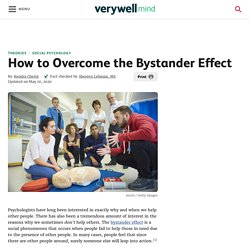

(1) Illustration of Bystander Effect. (1a) Comments on illustration of bystander effect. (2) Experiments on bystander effect.
Dr.Philip Zimbardo , President of Heroic Imagination Project. mentioned that the idea is you should treat everyone as you would want them to treat you. It's the golden rule to do unto others. It promotes the notion of social community. with a sense of reciprocity , we all should help one another if we ever want anyone to help us. The men in the blue shirt in the video also depicts the typical example of bystander effect. He thinks that if others managed to see the pickpocketing and did not take any action. Why should i? He's influenced by the apathy of everyone else in the queue. The experiment on liverpool street station in london also depicts a typical bystander effect. However, the actor in suit is helped within 6 seconds and when the actor changed to a casual attire, he was not offered help for more than 20 minutes. It also determines on what social status is the person. Professor Helen Haste also imparts 2 conflicting rule of bystanders effect , one rule is we ought to help and the other rule is to do what everybody else is doing. -Comments by Tan Jun Hao from SUSS – eaneternity
(2a) Comments on experiment of bystander effect. (3) Video on how to counteract the bystander effect. (3a) Comments on video on how to counteracts bystander effect. (3b) How to counteract the bystander effect? (3c) How to counteract the bystander effect? Psychologists have long been interested in exactly why and when we help other people.

There has also been a tremendous amount of interest in the reasons why we sometimes don't help others. The bystander effect is a social phenomenon that occurs when people fail to help those in need due to the presence of other people. In many cases, people feel that since there are other people around, surely someone else will leap into action.1 While the bystander effect can have a negative impact on prosocial behavior, altruism and heroism, researchers have identified a number of different factors that can help people overcome this tendency and increase the likelihood that they will engage in helping behaviors.2 Some of these include: Witnessing Helping Behavior Sometimes just seeing other people doing something kind or helpful makes us more willing to help others. Imagine that you are walking into a large department store.
Being Observant Being Skilled and Knowledgeable Guilt Feeling Good. (4) Case study 1 : Zhumadian Hit and Run footage *Warning Graphic Content* (4a) Case study on Zhumadian article. Horrifying footage has emerged online showing a woman being hit by a taxi and left lying in the middle of a crossroad for more than two minutes - and is then run over a second time.

Over 20 onlookers ignored the wounded pedestrian as they walked past her before an SUV ran her over for a second time, according to Daily Mail. She was killed after the second accident, said the police. A video of the incident was uploaded by web user Yuan Qicong on Weibo, a Chinese social media platform, on June 7. The post has been viewed more than 26 million times. (4b) Comments on Zhumadian case study incident. (5) Case study 2 : Kitty Genovese and bystander effect.
The Kitty Genovese murder in Queens, New York, in 1964 is one of the most famous murder cases to come out of New York City and into the national spotlight.

What propelled it wasn’t the crime or the investigation, but the press coverage that alleged the murder had many witnesses who refused to come to the Kitty Genovese’s defense. This has been disproved over time, but not before it became part of the accepted lore of the crime. Kitty Genovese was returning from work home at around 2:30 a.m. on March 13, 1964, when she was approached by a man with a knife. Genovese ran toward her apartment building front door, and the man grabbed her and stabbed her while she screamed. A neighbor, Robert Mozer, yelled out his window, “Let that girl alone!” Genovese, seriously injured, crawled to the rear of her apartment building, out of the view of any possible witnesses.
She was found by neighbor Sophia Farrar, who screamed for someone to call the police. (6) Conclusion on bystanders effect by Jun Hao.